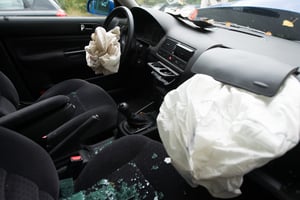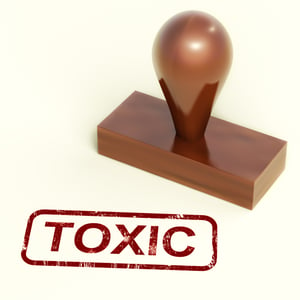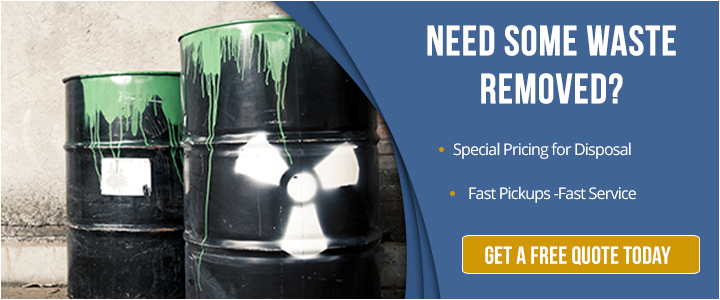Sodium azide is a potentially deadly chemical that can be difficult to detect. An odorless white powder, sodium azide acts rapidly when mixed with water or an acid, changing quickly to a toxic gas that suddenly produces a strong-smelling odor.
Sodium azide can also turn into a toxic gas when it comes in contact with solid metals. For example, if you place sodium azide in a drain pipe where it comes in contact with lead or copper, it can produce a toxic gas. Reactions with these metals can also cause an explosion in the drain lines.
The danger lies in the fact that a sharp odor may not be enough warning that danger is imminent. That’s why education and prevention are key in any environment where sodium azide is used.
Where Is Sodium Azide Used?
Sodium azide, or NaN3, is found in a wide range of industrial and laboratory applications. It’s perhaps best known as being a chemical found in automobile airbags. When an automobile impact occurs, an electrical charge is triggered. This causes sodium azide to explode, converting to nitrogen gas inside the airbag.
as being a chemical found in automobile airbags. When an automobile impact occurs, an electrical charge is triggered. This causes sodium azide to explode, converting to nitrogen gas inside the airbag.
This substance is also used in hospital and laboratory settings as a chemical preservative due to its antimicrobial properties. Sodium azide can help prevent bacteria and fungi from growing and in turn, extend the shelf life of products like biological samples and diagnostic reagents.
Sodium azide can even be used as a reagent itself in various chemical reactions. Lab technicians commonly use it in organic synthesis, particularly in the form of azides, which are versatile compounds used in the production of pharmaceuticals, dyes and polymers.
Sodium azide is also used in biochemistry and molecular biology laboratories as an inhibitor of enzymes. By blocking specific enzyme activity, sodium azide aids in studying and understanding various biological processes.
In agriculture, sodium azide is used as a form of pest control. It’s particularly effective against rodents and insects because its properties interfere with these pests’ metabolic processes.
How Is Sodium Azide Toxic?
Sodium azide poses a significant risk to human health, though the seriousness depends on the amount of exposure, how you are exposed and the length of time of the exposure. Age and whether a person has a pre-existing medical condition may contribute to the effect sodium azide has on the body.
how you are exposed and the length of time of the exposure. Age and whether a person has a pre-existing medical condition may contribute to the effect sodium azide has on the body.
According to the U.S. Centers for Disease Control and Prevention, breathing the gas that sodium azide forms can cause the most harm, but if a person ingests it by swallowing the substance, it can produce toxic effects as well.
Sodium azide prevents the body’s cells from using oxygen, causing the cells to die. This hazardous substance typically causes more harm to the heart and brain than to other organs since both use a substantial amount of oxygen, according to the CDC.
When an individual is exposed to a small amount of sodium azide through breathing the gas, absorbing it through the skin or ingesting it, that person may notice symptoms within just a few minutes. These symptoms include:
- Clear drainage from the nose (especially when exposed to gas or dust)
- A cough (especially when exposed to gas or dust)
- Dizziness and headaches
- Nausea and vomiting
- Rapid breathing and heart rate
- Red eyes (especially when exposed to gas or dust)
- Restlessness
- Weakness
- Skin burns and blisters (especially when exposed through direct skin contact or if an explosion occurs)
Exposure to large amounts of sodium azide, no matter the route, can produce more serious health effects, including convulsions, low blood pressure, loss of consciousness, lung injury, respiratory distress or respiratory failure, slow heart rate and even death. Humans can also suffer long-term health effects, including heart and brain damage.
Actions To Take If Exposed
If your workplace uses sodium azide, it’s important to have an action plan in place that allows employees to minimize exposure and the harmful effects that can come with an accident.
The CDC recommends that workers immediately move to fresh air. If sodium azide is released outside, workers should move away from that area. If released inside, move outdoors. If leaving the area is not an option, it’s important for employees to stay as low to the ground as possible since the fumes from sodium azide rise.
If employees believe they have been exposed to a sodium azide powder or solution, they should remove their clothing and wash their bodies with soap and water. Make sure they cut the clothing off their bodies rather than pull pieces of clothing over their heads. Clothing should then be disposed of inside a plastic bag sealed into a second plastic bag. Relay to your local health department or emergency personnel upon their arrival where you placed the plastic bags.
It’s important to never pour sodium azide down the drain in an attempt to get rid of it. This includes never pouring down any substances that may contain sodium azide, including food, water or even vomit, because of the risk of a fire or explosion. Seek medical attention if needed right away.
How To Safely Dispose Of Sodium Azide
When disposing of sodium azide, it’s critical to consult the Safety Data Sheet (SDS) that comes with this substance. You can also refer to specific guidelines provided by the manufacturer for the proper handling and disposal of sodium azide. The SDS or manufacturer may be able to provide detailed instructions that are tailored to the specific formulation or concentration of the sodium azide you are working with in your lab.
There are certain methods you can use to dispose of sodium azide. However, some of these methods put your organization at risk. For example, you can use the sewer system for disposal IF you flush the sodium azide with 100 times more water than the solution itself. Significant amounts of water are needed to flush the material down the drains and safely through the drain lines.
While this may be an easy method of disposal, many safety experts discourage this practice because if performed improperly, sodium azide can become an environmental pollutant and may result in explosions if azide salts accumulate in the drain lines. If you work with significant amounts of sodium azide, you may also see a hefty water bill if using this method for disposal. You’re also hurting any sustainability efforts you strive to achieve as an organization since you’re wasting enormous amounts of water.
A more ideal method for disposal is through enlisting the help of a hazardous waste disposal company that can ensure your waste is disposed of safely. Hazardous waste disposal companies will transport your waste and dispose of it at a licensed and permitted disposal facility that is equipped to handle sodium azide.
As a waste generator, you are responsible for your waste from the moment it is generated to the moment it is properly disposed of. This is called cradle to grave. Working with a reputable transporter can help ensure that you comply with Resource Conservation and Recovery Act (RCRA) regulations and that the sodium azide you dispose of does not pose a threat to the environment or human health.
What A Disposal Company Should Offer
Just because you hire a disposal company doesn’t mean that your sodium azide waste is in good hands, however. It’s important to do your research and look for certain qualities in a company to ensure your hazardous waste safely makes it to the appropriate disposal facility.
The best disposal companies will:
- Be licensed, insured and registered with the Department of Toxic Substances Control (DTSC)
- Be experienced in transporting the type of hazardous waste you generate
- Identify unknown wastes through sampling and testing
- Transport the waste to the appropriate recycling and disposal sites, even if these sites are across state lines
- Prepare labels, manifests and other paperwork or information you need for transport
- Offer prompt pickups
- Address any cost concerns you have
- Assist you with packaging your waste to ensure it is safe from posing threats and so you can avoid fines and save money
When searching for a hazardous waste disposal company, make sure you avoid working with hazardous waste brokers. In the hazardous waste disposal industry, brokers act as unqualified middlemen and drive up costs. Even worse, you lose control over who ultimately transports your sodium azide waste.
Another clue that you’re working with a high-quality disposal company is if it provides a hazardous waste walk-through program. A walk-through program is consultative in nature and helps you identify potential hazards or compliance issues in how you store and dispose of sodium azide, as well as for other types of waste in your facilities.
Putting into place a comprehensive waste management plan now can save your company costly fines in the future.


Comment